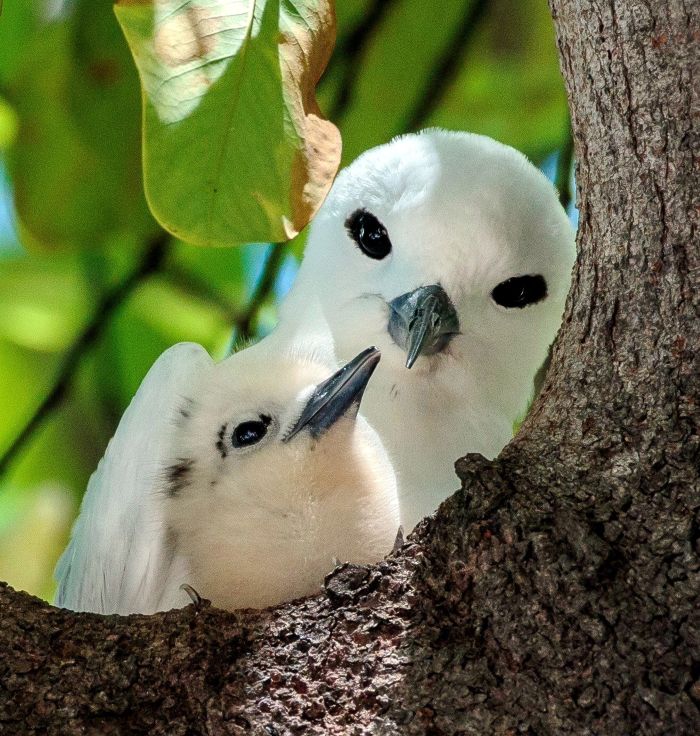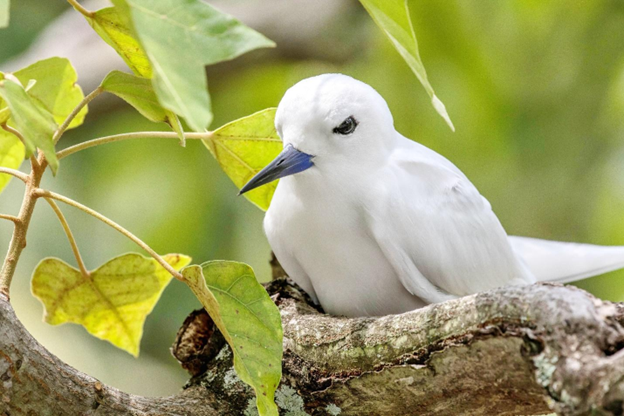
Now It’s Their Tern: Honolulu’s Manu o Kū
/ Bird News, General Updates / By
Susan Scott
10 things we want to share about Honolulu’s manu o Kū (White Terns)
- Although Manu o Kū breed worldwide on tropical and subtropical islands in the Atlantic, Pacific, and Indian Oceans, one group has chosen to raise their young in Honolulu.
- The first record of this seabird breeding on Oʻahu was in 1961 when a birder photographed a manu o Kū sitting on an egg in a Kiawe tree near Koko Head.
- Today, Oʻahu’s south side hosts approximately 3,600 breeding adults, ranging from Hawaiʻi Kai to Pearl Harbor.
- Tens of thousands of White Terns breed in the Northwest Hawaiian Islands, but among the 8 main Hawaiian Islands, Oʻahu is the only one (so far) honored by this seabird’s presence.
- Only the birds know why they favor Oʻahu’s south side. Two theories: city tree trimming enhances breeding sites, and fewer tern predators (rats, cats, and barn owls) live in the lighted, loud, busy city.
- In 2007, Honolulu’s then-mayor Mufi Hanneman proclaimed the White Tern Honolulu’s official city bird.
- Manu o Kū build no nest. The female lays her egg wherever she can balance it in a tree or on a human-made structure.
- Chicks hatch with well-developed feet and claws, good for holding onto surfaces. Even so, some fall from their trees.
- Blue ribbons on tree trunks indicate where parents are raising chicks. This alerts arborists to the presence of the federally and state protected birds, and also gives kind-hearted people a phone number to call for rescues.
- Because manu o Kū carry whole fish in their beaks to feed their waiting chicks, traditional Polynesian navigators watch for parent birds offshore as clues to the direction of land.

